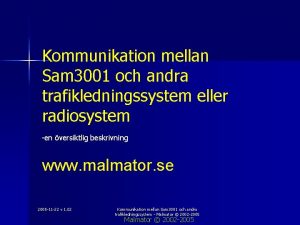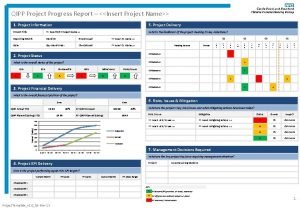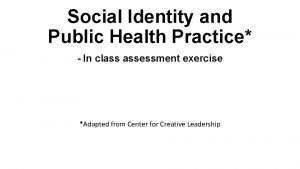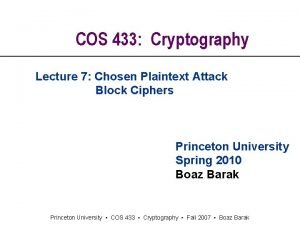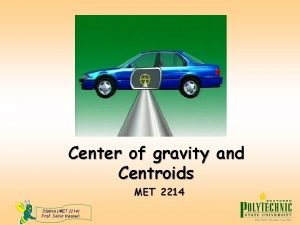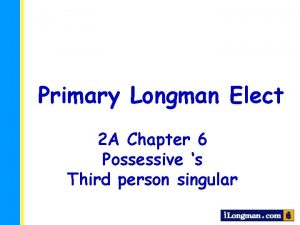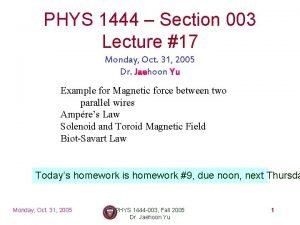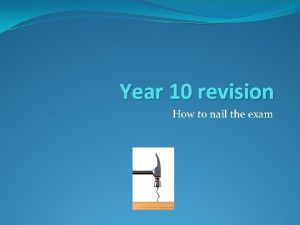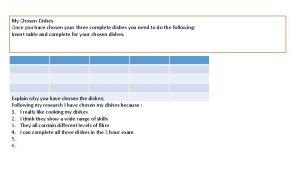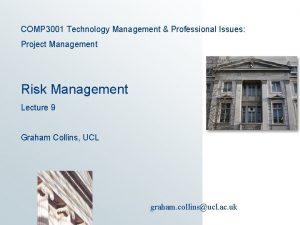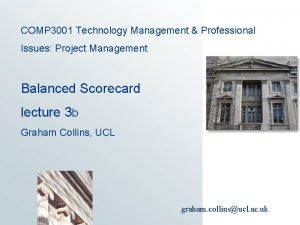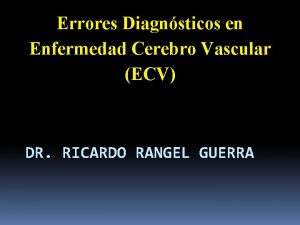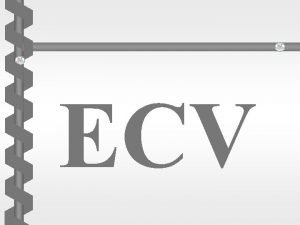Project Progress ECV 3001 Chosen product q Paper
























- Slides: 24

Project Progress ECV 3001 Chosen product: q Paper Target Community: q Student (Secondary school) – still searching Consist of: Part 1 q What is Chemical Engineer q Involvement of Chemical Engineer in industry q Chemical Engineer with society Part 2 q Process of making paper q Involvement of Chemical Engineer in the production q Type of product produce from paper Part 3 q How to dispose it in proper ways? q How to recycle it? * These 3 parts will be our group items to present to our target community.

PART 1 Activities with target community: • Some survey questions about ‘What is Chemical Engineer? ’ • Sharing sessions as we are students from Bachelor of Chemical Engineering • Question and answer sessions

WHAT IS CHEMICAL ENGINEERING

• CHEMICAL ENGINEERS CONCEIVE AND DESIGN PROCESSES TO PRODUCE, TRANSFORM AND TRANSPORT MATERIALS — BEGINNING WITH EXPERIMENTATION IN THE LABORATORY FOLLOWED BY IMPLEMENTATION OF THE TECHNOLOGY IN FULL-SCALE PRODUCTION.

INVOLVEMENT OF CHEMICAL ENGINEERING IN INDUSTRY

1. SEEK NEW AND MORE EFFICIENT PROCESSES AND MATERIALS, OR IMPROVE OR FIND NEW USES FOR EXISTING MATERIALS. 2. DESIGN METHODS AND EQUIPMENT TO CONTROL AND CONTAIN THE PROCESSES THAT TRANSFORM BASIC MATERIALS INTO USEFUL PRODUCTS. 3. ENSURE THE SAFE, EFFICIENT AND ENVIRONMENTALLY FRIENDLY OPERATION OF EQUIPMENT AND TEST PRODUCTS AT VARIOUS STAGES OF PRODUCTION TO CHECK THE QUALITY. 4. MAKE PLANS AND SPECIFICATIONS FOR NEW PRODUCTION PLANTS, TAKING INTO ACCOUNT AVAILABLE TECHNOLOGY, THE COST AND SIZE OF EQUIPMENT AND STORAGE SPACE, MARKET NEEDS, TRANSPORT METHODS AND DISPOSAL OF SURPLUS SUBSTANCES. 5. REVIEW CURRENT METHODS OF PRODUCTION FOR COST EFFICIENCY, ENVIRONMENTAL FRIENDLINESS, MAXIMUM OUTPUT AND PRODUCT QUALITY. 6. IDENTIFY FAULTS IN THE DAY-TO-DAY OPERATION OF PROCESS PLANTS (SUCH AS OIL REFINING, STEEL MAKING, WATER TREATMENT) AND TAKE CORRECTIVE ACTION. 7. PREPARE REPORTS, FEASIBILITY STUDIES AND COST ANALYSES OF PROCESSES.

industries. Chemical processes – Involving the fertiliser industry, including pesticides and herbicides, caustic soda, glass and specialty chemicals. Combustion – Large industrial furnaces such as those for steel manufacture or for power generation from coal or gas, or the recovery of valuable energy from waste. Environmental – Waste and water treatment, environmental regulations and recycling. Recovering and reusing valuable materials instead of dumping them. Minerals – Major minerals industries such as alumina/aluminium, steel, copper, lead and gold. Petrochemicals – Converting oil and gas into plastics, synthetic rubber and other things. Process control – Instrumentation and control systems which make a manufacturing process run smoothly, safely and efficiently. Petroleum – Producing oil, gas and LPG from onshore and offshore fields. Project delivery – Converting the design of a process plant into an efficient,

CHEMICAL ENGINEER TO SOCIETY Ø Improve food processing techniques, methods of producing fertilizers and increase the quantity and quality of available food Ø Chemical engineer construct the synthetic fibers that make our clothes more comfortable and water resistant Ø Develop methods to mass-produce drugs and making them more affordable Ø Chemical engineer create safer and more efficient methods of refining petroleum products, making energy and chemical sources more productive and cost effective Ø Develop solutions to environmental problems, such as pollution control and remediation

PART 2 Consist of: 1. Process of making paper 2. Type of product produce from paper Activities with community: 1. Explain briefly about process of making paper - Simple and easy to understand - Video animation 2. Give example for type of product produce from paper - Example that related to target community 3. Questions and answer sessions

Process of Making Paper Explain briefly about process of making paper • Simple and easy to understand • Video animation

Involvement of Chemical Engineer in Production of Making Paper Involvement: • Chemical pulping process • Screening and cleaning • De-inking

Type of Product Produce From Paper q Office paper q Toilet paper and tissues q Paper towel and napkin q Greeting card q Cupboard q Magazine and newspaper

Continue with. . . Q & A Session

Consist of: ü How to dispose? ü How to recycle? PART 3 Activities with target community: ü Sharing sessions ü Games - Origami challenges

HOW TO PROPERLY DISPOSE PAPER? HOW TO RECYCLE PAPER? NURIN

HOW TO PROPERLY DISPOSE PAPER? Shredding • Buy a paper shredder. Shredding is usually a safe way to recycle private documents. But it is not very efficient if you are shredding large amounts of paper since it could take a very long time. However shredding paper reduces the fiber lengths, making it more difficult to recycle into new paper. If possible, use a black marker to remove sensitive information instead of shredding paper. Ink is easily removed in the recycling process. • Shred the paper by hand. You probably only want to do this if you have a relatively small amount of paper to dispose of, as this method can be rather time-consuming. Make sure you do tear the paper into very small pieces. Then, store the paper in a bag somewhere safe, such as a locked closet or office, until you can recycle it. • Recycle the shredded material. If the amount of shredded material will fit into your home recycling bin, its fine to put it in there. If you have a large volume of shredded material, it’s better to take it to a recycling agency yourself.

HOW TO PROPERLY DISPOSE PAPER? Burning • Choose a place to burn the paper. Do not burn papers in your wastepaper basket inside. This can easily get out of control and catch other things alight, leading to a serious house fire. You can use a furnace to destroy large amounts of paper documents. This can be done either in the premise or outside. There also miniature furnaces that can be used to destroy a bin full of paper by burning. Burning is only effective if it’s done properly. Before burning outside, make sure you are allowed to burn paper in your city, county, or township. • Burn the paper. Take every precaution possible to prevent fire risks. If burning in a metal barrel, do it in an open area on a surface such as concrete, to avoid catching the container or anything not in the bin on fire. Make sure that all the documents burn completely. If they haven’t, repeat the process until they do. Choose a non-windy day to burn outside. Always stay with a fire while it’s in progress. Never walk away from it. Don't burn paper that has plastic coating, magazines, colored paper, wrapping paper, or newspaper inserts. The ink used to print these materials contain metals that give off toxic fumes when burned. It is safe to burn documents on plain, uncoated printer paper, junk mail, envelopes (without plastic windows), and plain newspapers (with inserts removed). Allow the burn location to cool completely before doing anything additionally.

HOW TO PROPERLY DISPOSE PAPER? Composting • Newspapers and non-glossy paper make excellent compost material, especially in compost bins that have lots of kitchen type scraps. The types of paper you should avoid using in your compost are: glossy/waxy paper, magazine paper, fluorescent colored papers, paper with metallic inks and colored construction paper. • Shred or otherwise break down the paper. Composting with paper works best when shredded material is used because it breaks down more easily. Shredded material is also easier to mix into your compost pile. • Compost the paper. Stir it down into the compost heap so that it doesn’t get blown around by the wind. The dry material helps soak up the water content from the kitchen scraps and help oxygenate the pile. Recycling • Determine what papers you want to recycle. Unless shredded first, this is not a safe way to recycle private documents, because your sensitive information won’t be protected. Recycle the paper. Recycling is such an easy option, and the most environmentally friendly way to dispose of paper. • Make recycling a habit for you and your family. Many cities offer information and there are countless websites dedicated to ways in which you can become a better recycler. Aside from paper, you can recycle plastic, metal, glass, wood and many more.

HOW TO PROPERLY DISPOSE PAPER? Refusing • Stop junk mail. Junk mail is the worst culprit when it comes to wasting paper and paper clutter. • Go paperless. See if your bank or utility company will stop sending you paper bills. Almost all of these companies offer paperless options these days. Get direct deposit and paperless pay stubs, if they're an option for you. • Utilize the internet. Read your favorite newspapers and magazines online. Often the websites offer articles that aren’t featured in the papers/magazines, as well as offering a host of other cool and interactive stuff. Cancel your paper subscriptions and use the internet for your information! It’s where information moves fastest – it’s like keeping your finger on the pulse of the world. Whatever option that you may choose to use, the most important things to consider are; • The practicability of the method. Ask yourself how effective is the method you want to use. • The laws that touch on the method that you choose to use, especially concerning fire. • The amount of paper that you want to destroy and also the information contained that you want to get rid of.

HOW TO RECYCLE PAPER? Recycle Your Own Paper What You’ll Need: 1. Waste paper (almost anything will work – just avoid glossy paper like magazines) 2. Water 3. A blender or food processor 4. An old picture frame 5. Mesh or screen (can be found at a craft store) 6. Felt, cloth or sponge 7. A rectangular bin to hold water (a 13” x 9” pan would also work) 8. Decorations like dried flowers, confetti or seeds (optional • Tear the paper into small pieces and put into a blender with warm water. Blend until the mixture becomes a fairly smooth pulp. • Assemble your “mold”; attach your screen to your frame using duck tape, staples or any other method that will keep the screen affixed to the frame’s edges. • Pour the pulp into your bin or pan, then sink the mold into the water mixture. Pull the mold up, and pulp should cover the screen. At this point, you can add decorations. You can even add seeds to make plantable paper. Be sure to add a little more pulp to cover the decorations so they adhere to the paper. • Use a cloth or sponge to press out excess water. Now you need to let the paper dry. You can let it dry on the screen, you can flip the mold over and let your paper dry on another surface, or you can press a cloth into the mold so the paper adheres to it and can dry on the cloth. Any of these options should work. Just be sure to let your paper dry for a day or so.

HOW TO RECYCLE PAPER? Recycling in the Garden & Garage • Turn newspaper and office paper into mulch. Tear the paper into strips, and layer it around your plants. This will help prevent weed growth and will keep the soil moist. The paper will eventually decompose and help give nutrients to the soil. Corrugated cardboard can be effective as well. Do not use glossy paper or colored ink. Add newspaper to the compost. Newspaper will add carbon to a well-balanced compost pile. • Protect against spills. Use old newspaper as a spill guard when performing auto repair or when painting and staining furniture. Use it as a covering for all of your craft projects. Recycling in the Office • Print on the back. Many printers only print on one side. If you’re printing something that doesn’t need to look professional, use an already printed scrap page. • Create a notepad. Assemble a stack of once-used papers. Turn them all upside down, then bind the top with staples or brads.

HOW TO RECYCLE PAPER? Recycling Around the House • Make cat litter. Shredded newspaper can be turned into an effective cat litter. Ø Ø Shred the paper, preferably in a paper shredder. Soak the paper in warm water. Add a small amount of biodegradable dish soap. Drain the water and soak again without the soap. Sprinkle baking soda onto the paper and knead the mixture together. Squeeze out as much moisture as possible. Ø Crumble onto a screen and let dry for a few days. • Wrap presents. Use old newspaper to wrap gifts. The Sunday comics are especially effective due to the many colors. • Pack a box. Use old paper to stuff a package for shipping. Wrap fragile objects in layers of paper, and fill the gaps in the box with crumbled wads so that everything stays snug. • Make a book cover. You can use paper bags to make book covers for your old and new hardbound books that you can decorate however you’d like.

HOW TO RECYCLE PAPER? Recycling Through a Waste Management Service • Contact your local waste management company. Ask them about their available recycling services, as well as any recycling centers in your area. Ask them for details on what can and cannot be recycled. • • This is what generally will and will not be taken: Ø What you can recycle: Newspaper, magazines, maps, packaging, envelopes, cardboard. Ø What you can’t recycle: Waxed paper, laminated paper, pet food bags, food-soaked paper. Take your old paper to a recycling center.

Thank You Prepared by Part 1 o AISYAH BT M YAHYA 182137 o NUR SAFIQAH BT AHMAD 182049 Part 2 o MOHD NAZMI BIN MIZAN o MOHAMAD FIKRI BIN MOHD AZAM o MOHAMAD IMRAN MUKMIN BIN FAHARUL AZMAN 182229 182053 182171 Part 3 o NURIN FARHANA BT NASARUDIN 182320 o MUHAMMAD HANAFI BIN RASHID 182165
 Portfolio plan example
Portfolio plan example Physical progress and financial progress
Physical progress and financial progress Sam3001
Sam3001 Vilbolandet
Vilbolandet Fe5201
Fe5201 Scb-3001
Scb-3001 How to report project progress
How to report project progress Measuring project progress
Measuring project progress Final year project presentation template
Final year project presentation template Project progress status
Project progress status Paper 2 aice general paper
Paper 2 aice general paper General paper topics
General paper topics The chosen written by
The chosen written by The chosen copyright
The chosen copyright Social identity map examples
Social identity map examples Sony market segmentation, targeting and positioning
Sony market segmentation, targeting and positioning Every high priest is chosen
Every high priest is chosen Collect synoynm
Collect synoynm Chosen plaintext attack example
Chosen plaintext attack example Centroid statics
Centroid statics Affective play space
Affective play space Apikorsim meaning
Apikorsim meaning The teacher has chosen candidates for my husband
The teacher has chosen candidates for my husband What is iencl, the current passing through the chosen loop?
What is iencl, the current passing through the chosen loop? Yirkala
Yirkala


